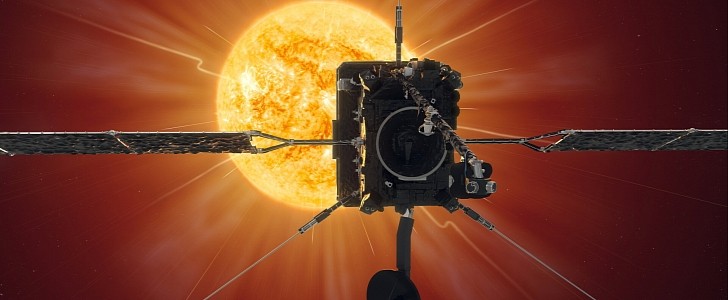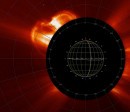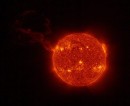The Solar Orbiter has recently passed a unique point in its journey towards the Sun that allows researchers to better study the solar wind. This is just the beginning, though. The spacecraft will provide more and more data as it approaches the star.
Solar Orbiter is an international cooperative mission between ESA (the European Space Agency) and NASA that seeks to unravel the Sun's mysteries. On March 26th, the spacecraft is expected to reach the closest approach to the Sun, called perihelion.
Its first perihelion occurred in June 2020, when it got 77 million km (47 million miles) away from the star. This time, it will approach within 50 million km (31 million miles), which is less than a third of the distance between the Sun and our planet.
This will allow the Orbiter to transmit high-resolution images and collect data using different scientific instruments on board to reveal more information about the miniature solar flares dubbed campfires, which it observed back in 2020.
But its journey to the Sun is just as exciting. On March 7th, the spacecraft passed between the Earth and the Sun, about halfway between our planet and its star. This is a great opportunity for scientists to study space weather and what connections take place between the Sun and Earth.
The Sun's upper atmosphere releases a constant stream of charged particles. This is referred to as solar wind. It transports the magnetic field of the Sun into space, where it interacts with Earth and affects satellites.
Magnetic activity on the Sun, which typically occurs above sunspots, can cause wind gusts, amplifying these effects. This is known as space weather, and scientists have the opportunity to study in a unique way as the Orbiter passes the Earth-Sun line.
The remote sensing equipment on the Solar Orbiter is also capable of detecting the origin of any event on the surface of the star. According to ESA, even if no major event occurs, the same packet of solar wind can be thoroughly studied as it moves through space.
Its first perihelion occurred in June 2020, when it got 77 million km (47 million miles) away from the star. This time, it will approach within 50 million km (31 million miles), which is less than a third of the distance between the Sun and our planet.
This will allow the Orbiter to transmit high-resolution images and collect data using different scientific instruments on board to reveal more information about the miniature solar flares dubbed campfires, which it observed back in 2020.
But its journey to the Sun is just as exciting. On March 7th, the spacecraft passed between the Earth and the Sun, about halfway between our planet and its star. This is a great opportunity for scientists to study space weather and what connections take place between the Sun and Earth.
The Sun's upper atmosphere releases a constant stream of charged particles. This is referred to as solar wind. It transports the magnetic field of the Sun into space, where it interacts with Earth and affects satellites.
Magnetic activity on the Sun, which typically occurs above sunspots, can cause wind gusts, amplifying these effects. This is known as space weather, and scientists have the opportunity to study in a unique way as the Orbiter passes the Earth-Sun line.
The remote sensing equipment on the Solar Orbiter is also capable of detecting the origin of any event on the surface of the star. According to ESA, even if no major event occurs, the same packet of solar wind can be thoroughly studied as it moves through space.
Today #SolarOrbiter is directly between Earth and the Sun, about halfway between the two, racing towards close solar approach on 26 March. A new image sequence covers 1 Jan-2 March and ends with a spectacular closeup view of a solar flare! See more???? https://t.co/7wUn5TQEtr pic.twitter.com/M5LCf6LIhW
— ESA's Solar Orbiter (@ESASolarOrbiter) March 7, 2022









